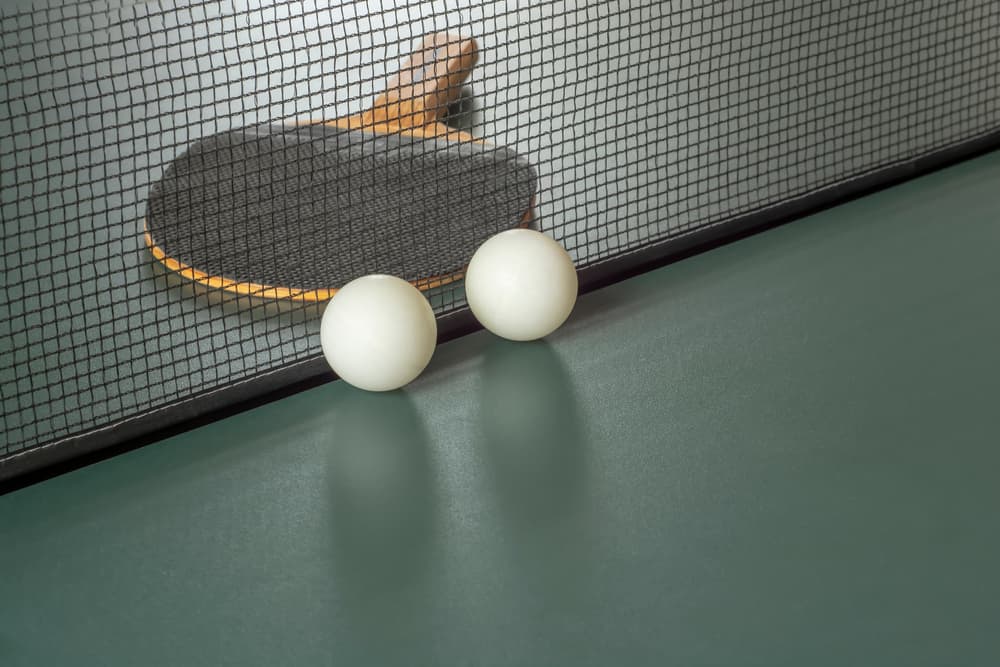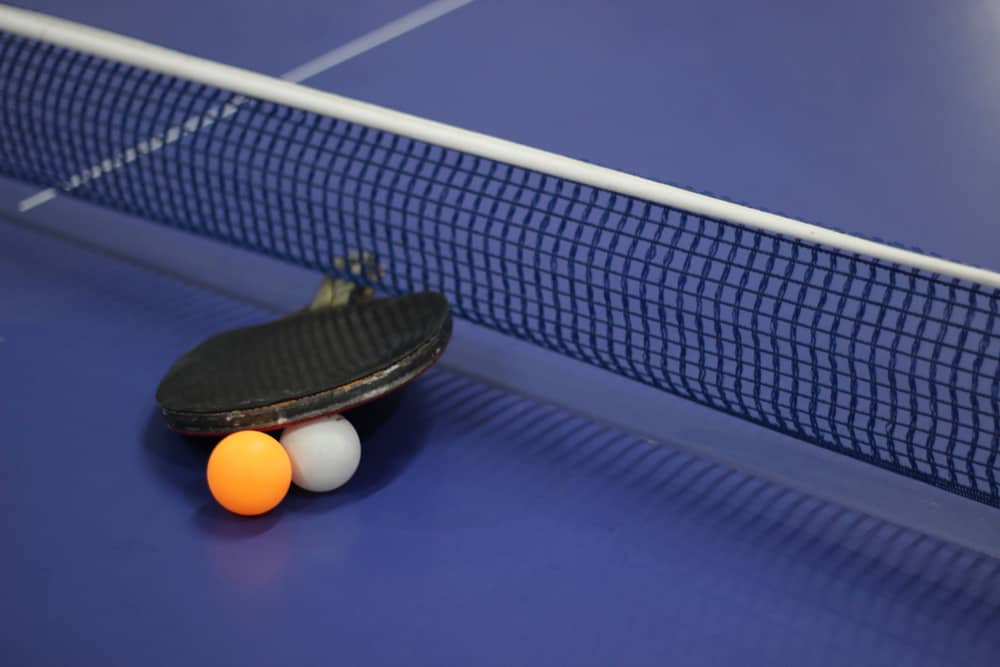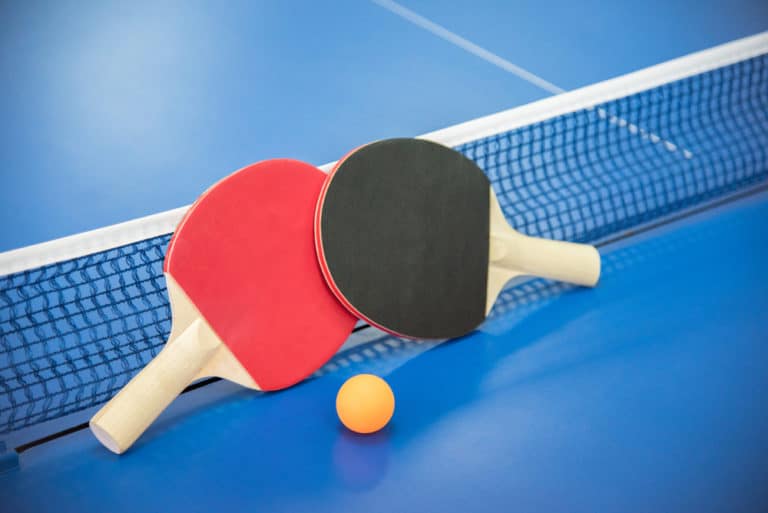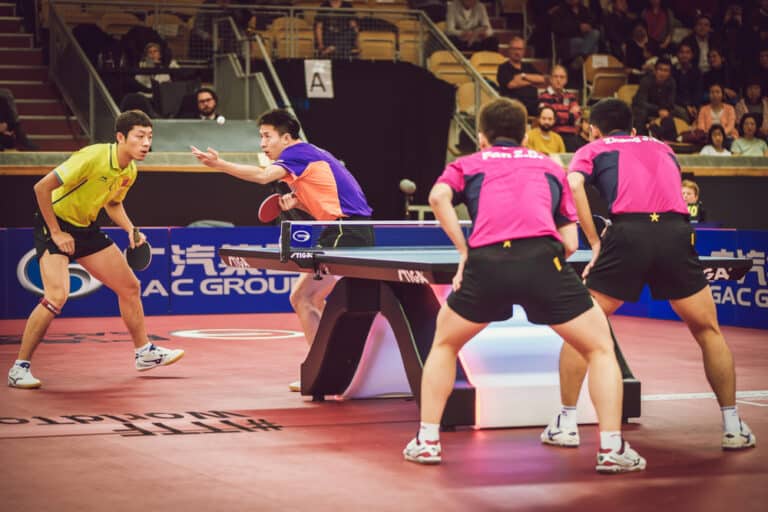What Does 40+ Mean On Ping Pong Balls?
If you’ve been playing ping pong for a while, you’ve probably seen many different ball brands. Some of them have a 40+ label, and you may have wondered what it means. You’re not alone! Ping Pong balls have a long history, with a few changes that have brought us to where we are today.
The ’40+’ on ping pong balls shows players that the ball is made from plastic rather than celluloid. The switch to plastic happened in 2014 when the ITTF decided to stop using celluloid balls. Plastic balls are slightly larger than 40mm (1.57 inches) in diameter, giving them the ’40+’ label.
Have you ever wondered what the ’40+’ on your ping pong ball means and whether it affects the way you play or the quality of your match? We’ve got you covered. This article will explain everything you need to know about the ’40+’ label on your ping pong ball and its meaning.
Why Are Ping Pong Balls Labelled 40+?
The standard size of ping pong balls today is 40mm in diameter. However, before 2000, the standard size was 38mm. The International Table Tennis Federation (ITTF) had the idea to change the size of the ball to make the sport more spectator-friendly, especially for those watching on television.
In 2014, the ITTF changed the rules regarding balls once again. Before 2014, ping pong balls were made of celluloid. However, this material was highly flammable, and many industries had already discontinued its use. The storage and transportation of celluloid balls were costly, and due to many countries banning the production of celluloid, the ITTF decided to switch to plastic balls.
Plastic ping pong balls are made of poly-plastic or ABS. The standard size is still 40mm, but due to the lower material density, the average size is 40-40.4mm. The ITTF allowed the slight increase, but only balls that fit into that range can be used in official matches. Because plastic balls are slightly above 40mm in size, they have been given the moniker ‘40+.’
What Size Are Plastic Ping Pong Balls?
Plastic balls have been the official ball type of ITTF-regulated tournaments since 2014. The switch came after growing concerns about the future availability of celluloid balls. The size of the balls is still regulated to 40mm in diameter, but the allowed range has changed from 39.6-40mm to 40-40.4mm.
The slight increase in size caused manufacturers to label their balls as ‘40+’ as an easy way of telling players that they are using plastic balls instead of celluloid ones. So if you see a ping pong ball with the label ‘40+’ on it, you’ll know it’s made from plastic.
The ITTF made the slight size change because the celluloid material previously used to manufacture balls is heavier than plastic and the ITTF wanted to keep the ball’s weight constant. Therefore it was necessary to slightly increase the plastic balls’ size to match the celluloid balls’ weight.
The change to plastic balls allowed manufacturers to produce a seamless version of the ping pong ball, which wasn’t possible with celluloid balls. Seamless balls boast better roundness and uniform thickness throughout the ball’s surface. Although, many still feel that seamless balls, which should be more durable than seamed balls, are not as good.
When the ITTF changed the official ping pong balls to plastic, there were a few noticeable changes to the ball’s behavior. Plastic balls have a much harder surface than celluloid ones. The harder surface made it difficult to apply the same amount of spin to plastic balls as their celluloid predecessors. Plastic balls also broke more easily than celluloid balls, causing many complaints among players.
In the early stages after the switch to plastic balls, the quality was lacking because nobody had found a method of perfecting the roundness of the plastic ball with no seem. That is until 2016 with the introduction of ABS balls.
What Size Are Celluloid Ping Pong Balls?
Table tennis players have been using celluloid balls since the early 1900s, when the sport’s popularity rose. Ping Pong players used celluloid balls in official ITTF matches and tournaments before 2014.
The ITTF is the organization in charge of regulating and organizing rules, requirements, and official tournaments for the sport. Using 38mm celluloid balls, players could achieve great speed and spin in their shots. This made the ball harder to follow, especially for TV viewers, and the rallies wouldn’t last very long.
In 2000, the ITTF decided to try and make the sport more spectator-friendly. To make it easier to watch and more exciting for viewers, they increased the size of the ball from 38mm to 40mm. This may seem like an insignificant change, and if you just looked at a ping pong ball, you might miss it. However, it changed many aspects of the game.
Why Did The ITTF Stop Using Celluloid Balls?
Throughout the 1900s, celluloid products caused many factory and warehouse fires because of how flammable the material was. The cost of storage and transportation was high as the material could not be allowed to get too hot or be stored in sealed containers. The risk eventually outweighed the benefits, especially as other, less flammable materials were being introduced into the market.
During the 1900s, countries started banning the production of celluloid products, and the ITTF worried about the future availability and cost of these balls. This led to the switch to plastic balls in 2014. The announcement was made in 2013, and by early 2014, many ping pong ball manufacturers had managed to produce plastic balls that met the ITTF’s requirements.
Plastic balls were used in ITTF tournaments from 2014-2015 as celluloid balls were no longer standard regulation. National and regional tournaments followed suit and required players to use plastic balls. Lower categories still used celluloid balls for a while. However, there are fewer and fewer players who still use celluloid balls today.

Why Did Ping Pong Balls Get Bigger?
The ITTF wanted to increase the sport’s popularity and felt that the rallies were too short because the ball moved too fast. The reason for this change was to slow the ball down and decrease the amount of spin. They increased the size to 40mm to make rallies longer and more exciting for viewers.
The change worked, and the speed of rallies decreased for several reasons. Firstly, the ball was easier to follow for players and spectators. This made it easier for players to react to shots and return the ball more easily. The high-speed shots that they were unable to return before had become manageable.
Secondly, the ball spin had decreased because of the larger size. Less spin meant that players could land returns on the table more often, as they weren’t as affected by the spin. The final reason was that because players could react and return more shots, the average length of their rallies increased.
Although the change lengthened the rallies, table tennis is still one of the fastest sports in the world because of the small playing area and the high speed of the ball. Longer rallies meant a few extra seconds per rally, which, compared to other sports, doesn’t feel like much. In a table tennis rally, however, it’s a relatively substantial change.
Many players were upset about the change, with some threatening to withdraw from tournaments, as they felt that it would change the game. On the other hand, beginners found learning to play easier because of the larger ball. The use of 40mm balls continues today, though the material used to manufacture ping pong balls has changed.
Table Tennis Technology And How It Affects 40+ Balls
Technology has advanced by leaps and bounds, especially in the last few decades. Table tennis is no different. The technology behind it has continually advanced, from the materials used to create ping pong balls to improving ping pong paddles.
38mm balls were preferred over 40mm balls because of the much higher speed and spin they could produce. At the same time, celluloid balls were preferred because of their higher spin abilities, while poly-plastic balls have less speed and spin. Although, advances in the technology of ball production and paddle design have narrowed the gap significantly.
Developing ABS For 40+ Ping Pong Balls
Acrylonitrile butadiene styrene, more commonly known as ABS, was introduced as a viable alternative to other plastics in 2016. ABS balls are much more durable than previous plastic balls. Their roundness is more consistent, and they bounce more than the initial poly plastic balls because they are slightly harder.
The ITTF tested the balls made of ABS, which met the requirements for official matches. Many players were satisfied with the ABS balls due to their consistency and durability. The introduction of these balls helped ease many players’ concerns about the switch to plastic.
ABS balls also give players better ball speed despite increased ball size, giving attacking-style players the advantage. Because of the lower spin factor, players who use primarily flat, attacking shots have a slight advantage over players who prefer to spin. An example of the attacking style advantage is a fourteen-year-old who advanced to the 2017 World Championship Quarter Finals with his flat, attacking play style.
Developing Rackets With More Spin For 40+ Balls
40+ plastic balls came with a few changes that affected the game in significant ways. The balls were harder, meaning more speed and less spin. Ping Pong manufacturers have put more into developing technologies that can enhance speed even further and increase the level of spin players can produce.
Ping pong racket technology is constantly evolving, with companies coming up with new designs for blades and rubbers that increase the speed and spin of the ball. Composite blades are an example of this. Wood and carbon composite blades offer players more speed on the ball, while pure wood blades offer more spin.
Celluloid balls offer players an incredible amount of spin. In contrast, plastic balls are harder, and players can’t spin the ball as fast. The drive for ping pong blades and rubbers that offer more spin comes after the switch to 40+ plastic balls. Tackier rubbers are being continuously developed to increase the amount of spin players can give plastic balls during rallies.
Defensive choppers and attacking loopers suffered the most from the change, as it became impossible to achieve the same spin on the ball that they were used to. The harder ball steered more players towards using tackier, sponged rubber on their rackets to increase the spin they could exert.
Tacky rubbers grip the ball more on contact and maintain contact for longer. The sponge underneath the rubber softens the impact slightly to give the ball a longer dwell time to allow the players to give the ball more spin. These developments took place to help players try and match the spin they achieved with celluloid balls.
FAQ
What star ratings do ping pong balls have?
Ping Pong ball star ratings were implemented as a way to tell players the quality of the ball they are using. Star ratings on ping pong balls range from one star to three stars. The higher the star rating, the better the overall durability and consistency.
What’s the difference in ping pong balls?
The ITTF regulates the weight of match standard ping pong balls to 2.7 grams. However, the balls are allowed to range from 2.67 grams to 2.77 grams. Heavier balls are faster and more stable, while lighter balls are slower and may wobble or go slightly off-course.
Conclusion
Ping Pong balls are either poly-plastic or ABS, weigh 2.7 grams, and measure 40-40.4mm in diameter. The diameter measurement is why manufacturers and players call it ’40+.’ Before 2014, ping pong balls were slightly smaller, measuring a maximum of 40mm (1.57 inches), and were made out of celluloid. Manufacturing celluloid balls were expensive, and many countries banned production.
Before 2000, ping pong balls were only 38mm in diameter, but the size was increased to 40mm because the ITTF wanted to make the sport more spectator friendly. The bigger ball was slower and spun less, so rallies would continue for longer to make rallies more exciting. This spurred players and manufacturers to devise solutions to increase the ball spin, which was seriously affected.







